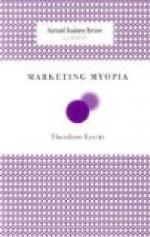If, on the contrary, the artery instead of the vein be compressed or tied, you will observe the part between the obstacle and the heart, and the heart itself, to become inordinately distended, to assume a deep purple or even livid colour, and at length to be so much oppressed with blood that you will believe it about to be choked; but the obstacle removed, all things immediately return to their natural state and colour, size, and impulse.
Here then we have evidence of two kinds of death: extinction from deficiency, and suffocation from excess. Examples of both have now been set before you, and you have had opportunity of viewing the truth contended for with your own eyes in the heart.
CHAPTER XI
THE SECOND POSITION IS DEMONSTRATED
That this may the more clearly appear to everyone, I have here to cite certain experiments, from which it seems obvious that the blood enters a limb by the arteries, and returns from it by the veins; that the arteries are the vessels carrying the blood from the heart, and the veins the returning channels of the blood to the heart; that in the limbs and extreme parts of the body the blood passes either immediately by anastomosis from the arteries into the veins, or mediately by the porosities of the flesh, or in both ways, as has already been said in speaking of the passage of the blood through the lungs whence it appears manifest that in the circuit the blood moves from that place to this place, and from that point to this one; from the centre to the extremities, to wit; and from the extreme parts back to the centre. Finally, upon grounds of calculation, with the same elements as before, it will be obvious that the quantity can neither be accounted for by the ingeata, nor yet be held necessary to nutrition.
The same thing will also appear in regard to ligatures, and wherefore they are said to draw; though this is neither from the heat, nor the pain, nor the vacuum they occasion, nor indeed from any other cause yet thought of; it will also explain the uses and advantages to be derived from ligatures in medicine, the principle upon which they either suppress or occasion hemorrhage; how they induce sloughing and more extensive mortification in extremities; and how they act in the castration of animals and the removal of warts and fleshy tumours. But it has come to pass, from no one having duly weighed and understood the cause and rationale of these various effects, that though almost all, upon the faith of the old writers, recommend ligatures in the treatment of disease, yet very few comprehend their proper employment, or derive any real assistance from them in effecting cures.
Ligatures are either very tight or of medium tightness. A ligature I designate as tight or perfect when it so constricts an extremity that no vessel can be felt pulsating beyond it. Such a ligature we use in amputations to control the flow of blood; and such also are employed in the castration of animals and the ablation of tumours. In the latter instances, all afflux of nutriment and heat being prevented by the ligature, we see the testes and large fleshy tumours dwindle, die, and finally fall off.




